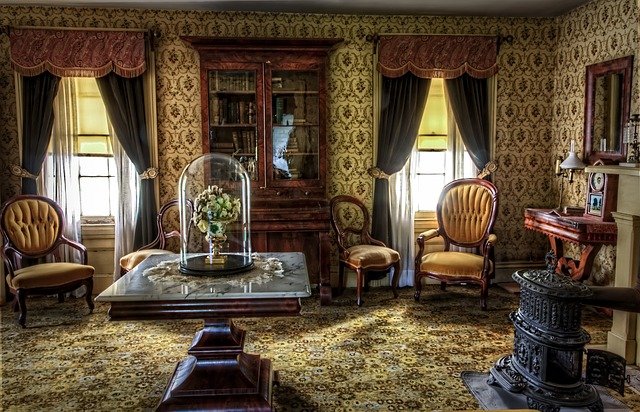By Tim Lambert
In the late 19th century about 80% of the population of the population was working class. To be considered middle class, you had to have at least one servant. Most servants were female. (Male servants were much more expensive because men were paid much higher wages). Throughout the century ‘service’ was a major employer of women.
In the 19th century, families were much larger than today. That was partly because infant mortality was high. People had many children and accepted that not all of them would survive.
In the 19th century, the father was the head of the family. Divorce was made legal in 1857 but it was very rare even in 1900.
In the 19th century, middle-class boys went to grammar schools. Middle-class girls went to private schools where they were taught ‘accomplishments’ such as music and sewing. In 1900 middle-class children had plenty of toys. They played with wood or porcelain dolls and toys like Noah’s arks with wooden animals. Poor children did not have any toys. Plasticine was invented in 1897 by William Harbutt. It was first made commercially in 1900. Also in 1900, Frank Hornby invented a toy called Meccano.
In the 19th century, well-off people lived in very comfortable houses. (Although their servants lived in cramped quarters, often in the attic). However, to us, middle-class homes would seem overcrowded with furniture, ornaments, and nick-knacks.
Gas fires became common in the 1880s. Gas cookers became common in the 1890s. The electric light bulb was invented in 1879 but at first electric light was expensive. In 1900 most middle-class families still used gas.
In the early 19th century only rich people had bathrooms. In the 1870s and 1880s, many middle-class Victorians had bathrooms built. The water was heated by gas.
In the 1890s, for the well-to-do, a new style of art and decoration appeared called Art Nouveau. It involved swirling and flowing lines and stylized plant forms.
Several new sports and games were invented during the 19th century. Rugby was invented at Rugby school in about 1823. Although a form of tennis was played since the Middle Ages lawn tennis was invented in 1873. Snooker was invented in India in 1875. Volleyball was invented in 1895.
At the end of the 19th century, bicycling became a popular sport. The safety bicycle went on sale in 1885. Bicycling clubs became common.
Ludo was originally an Indian game. It was introduced into Britain c. 1880. Meanwhile, archery was a popular sport for men and women.
Reading was also popular in the 19th century. In 1841 Edgar Allan Poe published the first detective story The Murders In The Rue Morgue. The first Sherlock Holmes story A Study in Scarlet was published in 1887 by Arthur Conan Doyle.
Many middle-class people enjoyed musical evenings when they gathered around a piano and sang.

In the 19th century, the Middle class was very fond of the theatre. In the late 19th century there were also music halls where a variety of acts were performed.
In the 19th century going to the seaside was very popular with those who could afford it. The first pleasure pier was built at Brighton in 1823 and soon they appeared at seaside resorts across Britain.
In the late 19th century religion was still an important part of middle-class life and most well-to-do people went to church on Sunday. However, in 1881 a survey showed only about 1/3 of the total population of Britain was at church on a given Sunday. By 1900 organized religion was in decline.
In the late 19th century jobs for middle-class women were becoming more common. In 1874 the first successful typewriter went on sale and the telephone was invented in 1876. These two new inventions meant more job opportunities for women.
Elizabeth Garrett Anderson (1836-1917) qualified as a doctor in 1865. She became the first woman in Britain to be mayor of a town (Aldeburgh) in 1908. The first woman in Britain to qualify as a dentist was Lilian Lindsay in 1895. The first woman to qualify as an architect in Britain was Ethel Charles in 1898.